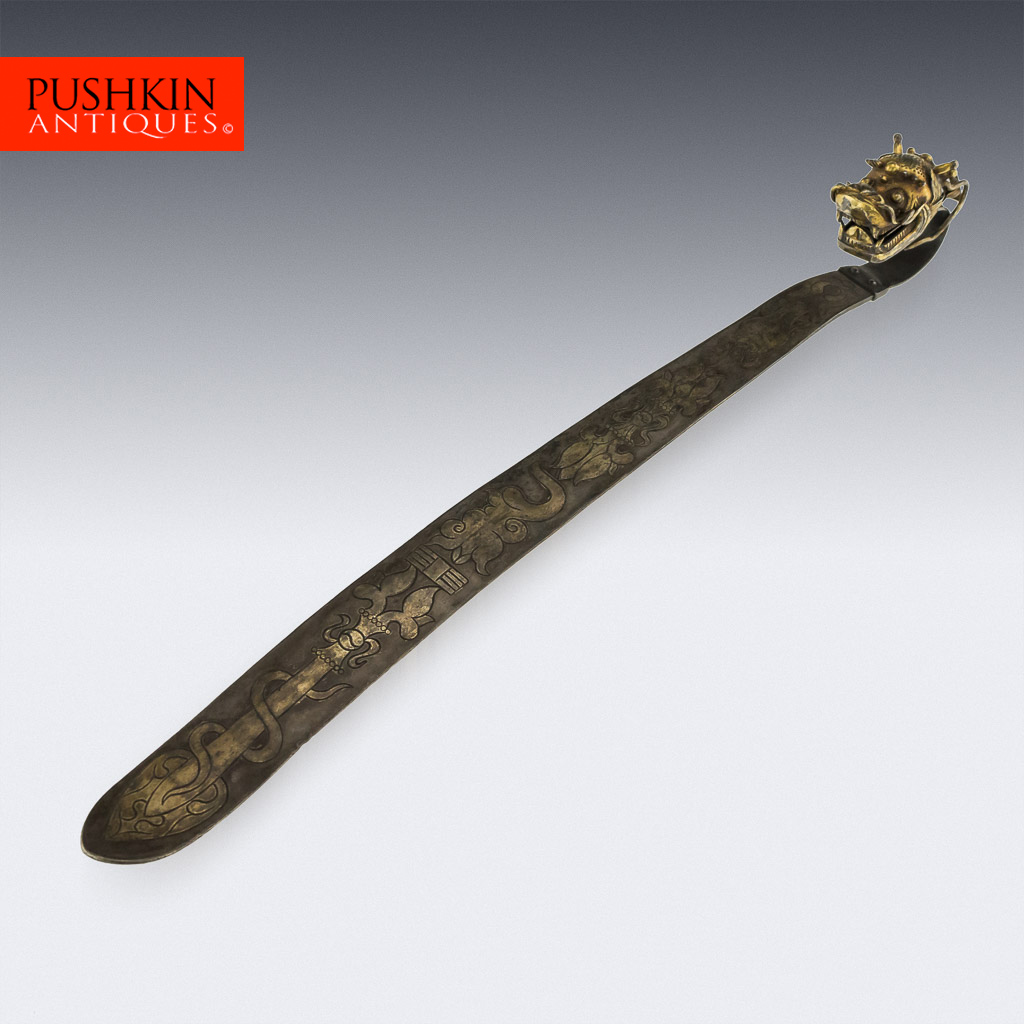 Image 1 of 12
Image 1 of 12

 Image 2 of 12
Image 2 of 12

 Image 3 of 12
Image 3 of 12

 Image 4 of 12
Image 4 of 12

 Image 5 of 12
Image 5 of 12

 Image 6 of 12
Image 6 of 12

 Image 7 of 12
Image 7 of 12

 Image 8 of 12
Image 8 of 12

 Image 9 of 12
Image 9 of 12

 Image 10 of 12
Image 10 of 12

 Image 11 of 12
Image 11 of 12

 Image 12 of 12
Image 12 of 12













ANTIQUE 17thC CHINESE QING DYNASTY SOLID SILVER-GILT DRAGON RUYI SCEPTRE c.1660
17th Century Chinese Qing Dynasty silver-gilt Ruyi scepter, Exceptionally hand crafted, fine engraved work, realistically modelled, removable dragon head revealing Chinese seal mark, symbolising peaceful, quiet, happy, healthy.
REFERENCE NUMBER: A5061
17th Century Chinese Qing Dynasty silver-gilt Ruyi scepter, Exceptionally hand crafted, fine engraved work, realistically modelled, removable dragon head revealing Chinese seal mark, symbolising peaceful, quiet, happy, healthy.
REFERENCE NUMBER: A5061
17th Century Chinese Qing Dynasty silver-gilt Ruyi scepter, Exceptionally hand crafted, fine engraved work, realistically modelled, removable dragon head revealing Chinese seal mark, symbolising peaceful, quiet, happy, healthy.
REFERENCE NUMBER: A5061
DESCRIPTION
Antique 17th Century Chinese Qing Dynasty solid silver-gilt Ruyi scepter, Exceptionally hand crafted, fine engraved work, realistically modelled, removable dragon head revealing Chinese seal mark, symbolising peaceful, quiet, happy, healthy. Ruyi – literally translated as ‘you wish’ , a curved decorative object that serves as a ceremonial scepter in Chinese Buddhism or a talisman symbolizing power and good fortune in Chinese folklore. A traditional ruyi has a long S-shaped handle and a head fashioned like a fist, cloud, or lingzhi mushroom. Ruyi are constructed from diverse materials. For example, the Palace Museum in Beijing has nearly 3000 ruyi that are variously made from valuable materials like gold, silver, iron, bamboo, wood, ivory, coral, rhinoceros horn, lacquer, crystal, jade, and precious gems. The "ruyi" image frequently appears as a motif in Asian art.
Some ruyi scepters are made of metal including gold, silver, copper and iron. They are worked with techniques including inlays and filigree. Those made of gold, silver and copper are mostly decorated with incised floral patterns. In the Ming dynasty (1368-1644) iron ruyi scepters with silver inlays were offerings for the Buddha. Most of the metal ruyi scepters in the Palace Museum collection were made for or purchased by the imperial household in the late Qing dynasty (1644-1911) for imperial birthdays or weddings.
CONDITION
In Excellent Condition - No Damage.
SIZE
Height: 5cm
Width: 37 x 3cm
Weight: 200g
